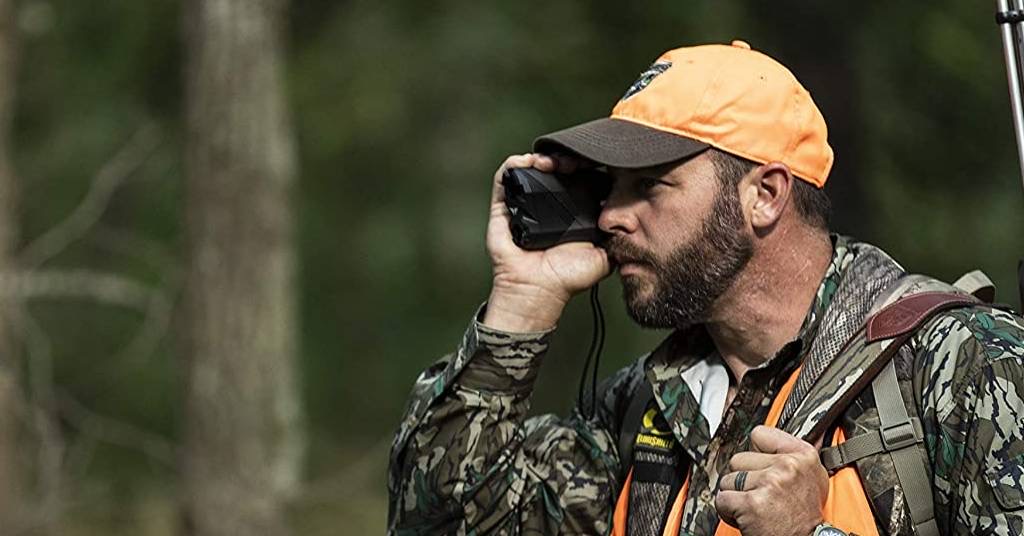Honestly, I really thought I was through writing some complex reviews on some of the tactical gear I have covered in my previous articles, albeit the difficulty mostly relative to the intricacies of some of the product-lines I have evaluated in the past.
Never in my wildest dreams did I foresee encountering any product-line as overwhelmingly elaborate and as awesomely vast as are “rangefinders” – matter of fact, this line of products can be deceivingly underestimated and/or naively misinterpreted as to what you are getting in terms of your investment.
In other words, deciphering which are the best rangefinders is a monumental task.
Take my word for that.
I dare all of you in my audience to tell me where you can go online and find two similar products, shown next to each other, where one sells for $33,000 dollars, and another one that looks just the same that sells for $800 dollars.
If that is not a telltale indicator of the enormity of the rangefinder product line, I do not know what is.
As I first saw the dichotomy in the price, I knew, right-of-the-bat, I was in for one of my greatest challenges ever to write this review.
Guess you, my audience, will be the ultimate beneficiaries, as I will try my best to sort-out for you in some sensical way the much elaborate considerations that go into purchasing the best rangefinder system suitable to your needs.
In doing so, I hope that I will, in some way, shape or form, make your life simpler by sparing you from wasting your precious time navigating through a maze of trivial high-tech info which will not only confuse you but also mislead you in making an investment you may later regret.
That said, however, I must, at the outset, forewarn you that my engineering skills are extremely limited, more so perhaps than yours, to where I cannot promise you and/or cannot commit that my review today can be as scientifically insightful as you may expect.
Notwithstanding this caveat, nevertheless, I will, on the other hand, commit to try and do my absolute best in covering what I deem to be some of the most crucial considerations as necessary to make a wise investment in this fascinating product-line of rangefinders – one which I really trust you will always value.
In a Rush? Here's The QUick List
What is a Rangefinder?
In the simplest and most basic way I can think of, a rangefinder is a device that measures distance from the observer to a target.
And, regretfully, this is where the simplicity begins and ends.
Rangefinders, as such, use different active methods to measure distance such as sonar, laser, or radar; others measure using trigonometry.
Older methodologies yet use a set of known information, usually distances or target sizes to make the measurement.
For the same reason, rangefinders lend themselves to a wide variety of uses and/or applications, which I will cover later in this review.
Suffice it to say, the combined variables in terms of measuring methods and uses or applications are such, it expands the purchasing considerations exponentially to where it is a virtual impossibility for me to try and cover them all.
That said, however, I shall try to use a methodical approach to the different subjects which I shall be covering to help you understand enough of these systems that will allow you to make the best possible decision of whichever system you decide to purchase in the end.
History of Rangefinders
The very first rangefinder is credited to a Scottish company called Barr and Stroud in the 1880’s.
It was not until World War II when the first electronic rangefinder was used.
That said however, you can go back to much earlier times to see proof of other devices that were used to tell the distance between objects.
Matter of fact, the Romans developed a tool called the “Roman Dodecahedron” – a small bronze artifact that dates back to the 2nd century AD, which served the purpose of measuring distances to target.
“The most primitive devices were equipped with an array of lenses and prisms on both ends of the device and with an eyepiece located in the center.
The position of the ‘parallax’ [the observed displacement of an object caused by the change of the observer's point of view] is corrected to view targets and estimate their distance to the user.
The user then calculated the angles made by the line of sight at both ends of the ranging device to determine the distance of the object.” – must say, great for the times but not practical by today’s standards to say the least.
Rangefinders – A Quick Outlook
Basic Objective
As I have said many times in my previous tactical gear reviews, one of man’s greatest challenges forever and ever has been that of hitting a target at a distance; be it in the form of different sports and/or as used in military and law enforcement applications.
Marksmanship is all about hitting what is known as the “bullseye” – the center of a ring as used by dart players or the center of a target in other applications.
This accuracy becomes all that much more relevant when applied to situations where life and death are at stake such as is the case in military missions, law-enforcement, or wartime applications.
Matter of fact, when talking about firearms, in general, forever back in history, technology and technological improvements have been continuously striving to develop optical systems specifically intended or designed to improve marksmanship – to advance man’ ability to see objects closer and to be able to hit distant targets with more precision and accuracy.
Nowadays, there are, if you will, an infinite number of optical devices, which come in all sizes, shapes, and forms, all of which were specifically conceived for dealing with distances to targets, each using varying technologies to achieve their objective.
As we speak, one of [the] most sophisticated systems there are to measure distance happens to be the rangefinder – the main topic of today’s review.
Performance in rangefinders is as varied as are the systems themselves.
Significant factors in evaluating performance are range, accuracy, ease of use under field conditions, size, weight, etc. I dare say, the costs of rangefinders are much relative to their performance capabilities, which, in turn, are associated with different applications.
That said, however, as usual, I always say ‘first things first.’
Before we jump into the more intricate topics, the very first thing we all need to become familiar with are the most commonly applied technologies used in rangefinders as follows.
Rangefinder Technologies
Ultrasonic
Ultrasonic distance-measuring devices use a wide-band frequency from a transducer, which sends out narrow beams of sound waves which bounce off an object.
The returning signal is picked up by a hand-held receiver.
Accuracy is influenced by the position of the receiver, the outside sound waves, and noise.
The major drawback of these systems is that the noises generated by the surrounding environment can affect the readings.
When a horizontal distance is measured, the inclination or horizontal position of the receiver is critical and can distort the measure.
Optical
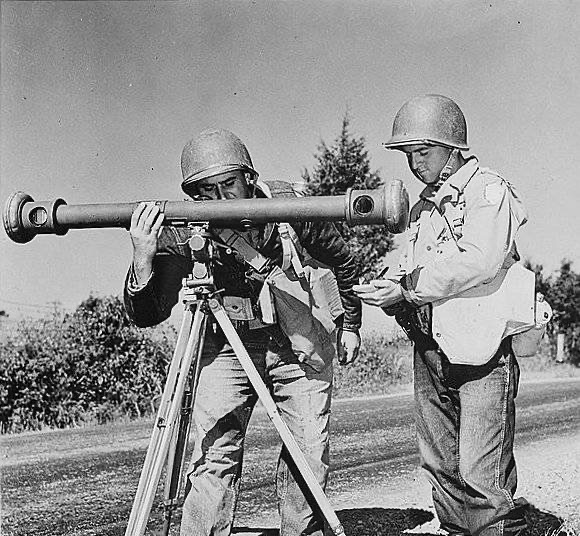
American soldiers using a Coincidence rangefinder during army maneuvers in the 1940s. Image courtesy of Wikipedia.
Optical distance-measuring devices typically use the “Coincidence” method of determining distance; using a series of lenses and mirrors to produce a double image.
The double images on mirrors are brought together by rotating a dial until both images merge into one.
The dial has a distance indicator. When the two images merge, the distance to the target is read directly from the dial.
Coincidence rangefinders were crucial on fire control systems for long-range naval guns and land base coastal artillery circa 1890 to 1960.
Stereoscopic telemeters look similar but have, instead, two eyepieces and use a different principle based on binocular vision.
Laser
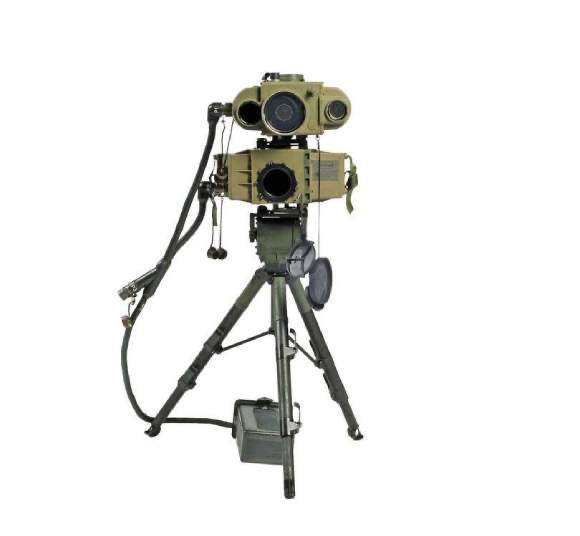
Laser Rangefinder. Image courtesy of Wikipedia
Pulse lasers determine distance by measuring the amount of time required for a pulse of infrared light to travel to the target and back.
By far, this is [the] most popular method used in rangefinder technology, thus the one we shall be discussing in today’s review.
Note: As you would expect, each of these technologies have advantages and disadvantages relative to their specific usages and/or applications. That said, however, the “Laser” technology is, by far, the most advanced of these technologies, which will be discussed in much more detail further along this review.
Rangefinder Uses and Applications
Must say, nowadays, the required accuracy of rangefinders varies much according to the application, or the mission performed.
Some rangefinders are perfectly accurate, and some are not.
Some are lightweight and compact, others heavy and cumbersome.
The size and weight of the equipment carried in the field should be a forefront consideration for applications which entail walking long distances or on steep terrains.
One of the most challenging topics when dealing with rangefinders has to do with the many applications for which nowadays rangefinders are used.
Among them, surveying, forestry, navigation, construction work, photography, archery, to mention a few.
Given the nature of our website, mostly dealing with tactical gear systems, in today’s review, I will be limiting my discussions to two of the most popular applications as follows:
And yes, while I do realize the sport of Golf would not be typically included in our tactical gear discussions, my research did show that rangefinders rate remarkably high in popularity with my golfer friends, thus today I will make an exception and give an overlook on this widely popular application for the benefit of all golf enthusiasts out there.
Rifle Hunting / Rifle Shooting
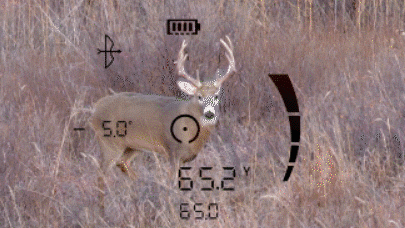
There are varying kinds of hunting which usually need a certain kind of rangefinder.
This is not a “one-size-fits-all” type of system.
Simply put, the whole pursuit demands diverse systems in a wide range of settings relative to a variety of games.
Bottom line beware that each kind of hunting necessitates a rangefinder that is designed to the specific type of hunting of your preference.
Rifle hunting and rifle shooting as such engage longer distances compared to other hunting applications.
The higher the range power of a model, the better reading you can expect.
In rifle hunting, magnification is a critical component of precision reading, models with 6x magnification are ideal for the job.
Many hunters use rangefinders to locate a target and use the rifle scope to aim and shoot at the target.
7x to 8x magnification is also highly recommended for rifle shooting.
My best advice to you is to try and find a level or straight design rangefinder whenever shooting at longer ranges, as the latter are far less stable.
The gripping rangefinder designs are larger in size and allows users to hold the unit with both hands.
Golf Rangefinders
While doing my due diligence research for this review, I just could not help noticing that all laser rangefinders fall into three main types: golf, hunting/nature ranging, and forestry.
Golf range finders are designed to locate the thin, vertical flag stick and separate it from the background.
Simply put, golf rangefinders are used to help golfers enhance their game.
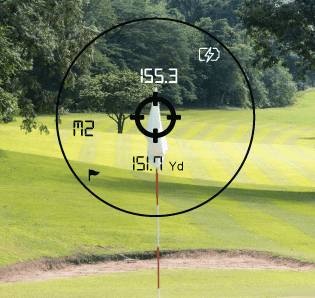
There are two main kinds of rangefinders for golfing: 1) GPS and 2) Laser.
Laser rangefinders for golfing are simple to set up and put together for using.
It uses highly accurate laser technology that calculates the distance between the device and the target.
Most of these devices have lengthy battery life and are light, portable in size which makes them simple to carry around.
They feature excellent accuracy as well provide for better target spotting with higher magnification levels.
GPS rangefinders as opposed to laser systems can offer precise distances by making use of the GPS [Global Positioning System] technology.
That said, however, when it comes to accuracy, GPS models still trail behind the laser rangefinder.
Vis-à-vis, laser rangefinders do not call for courses to be charted and they can take a while to provide accurate distance calculations compared with the GPS systems – a matter of personal preference at the end of the day.
Rangefinders – How do they Work?
Most modern rangefinders, in general, all work using the same basic principle, which starts when the user pushes a button.
This action prompts the device to spring a laser back off the target.
An integrated clock in the device then calculates the times the laser took to pass through to and back and find out the distance to plus or minus one yard.
The reading of the distance to target is shown on the equipment’s LCD display in a matter of seconds.
The ranges vary; in rifle models for example, ranges can go as far as 1200 yards while most models designed for hunting will go as far as 800 yards.
Invariably you will find that the terms rangefinder and laser rangefinder are used interchangeably with one another and there is a good reason for it as laser rangefinders are, by far, the most functional and technologically advanced measurement tools there are – that simple.
About Laser Rangefinders
Laser Rangefinders – A Quick Outlook
A laser rangefinder a/k/a laser telemeter is a rangefinder that, as the name implies, uses a laser beam to determine the distance to an object.
The most ordinary form of laser rangefinder operates on the time-of-flight principle by sending a laser pulse in a narrow beam towards the object and measuring the time taken by the pulse to be reflected on the target and returned to the sender.
Due to the high speed of light, this technique is not ideal for high-precision sub-millimeter measurements where triangulation and other techniques are required.
Laser rangefinders are, today, the most used measurement tool to enable fast distance measurement.
Laser rangefinders are considered by many an indispensable measurement tool that can come handy in construction work, military, forestry, sports, hunting, agriculture and everywhere else where quick and precise distances, angles, or slope measurements are desired.
How Do Laser Rangefinders Work?
Laser rangefinders work by emitting laser beams at the push of a button.
The beams bounce off distant objects and the rangefinder’s high-speed clock measures the total time it took from when the beam left the unit until it returned.
Using that time measurement, the rangefinder calculates the distance and displays it to the user.
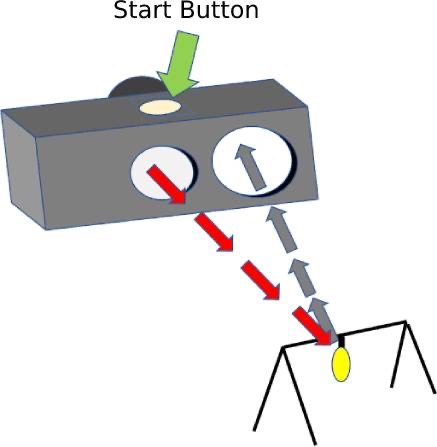
Benefits of Using a Laser Rangefinder
The main advantage of using a laser rangefinder other than their extremely precise measurement [+/- 1-5 mm per km] or [+/- 0.04” to 0.20” per 3280 ft.], is the fact that they can be used by one person alone.
Optical rangefinders require at least two people to handle correctly.
Laser rangefinders are also less susceptible to errors in measurement by incorrect positioning of the device as well as other operator errors.
Nowadays, most professional laser rangefinders are outfitted with electronic alignment aids, automatic calibration function and offer the ability to take measurements based on the Pythagorean equation or the ‘painter’ function, which, sorry to say, I would not even attempt to define for you as my credibility on the subject could be seriously compromised.
All I can say is that these tools also let you take continuous measurements, delayed measurements, measure the sum or difference surface and measure volume.
These units are, in fact, a lot brighter than most of us, thus, for the average guy like me, offer an added-value ability to rely on them for measuring with increased functionality and usefulness.
What to Look For in a Rangefinder
Narrowing the Alternatives
If nothing else, by now, it should have become obvious to you there are many rangefinders out there to choose from.
I think the very first big step in narrowing your options is to limit our discussions to, exclusively, laser rangefinders and simply disregard other technologies which, as we know already, are not as accurate nor as practical as the laser type.
Unbelievably, laser rangefinders available on the market today are vastly different from one another.
That said, however, there are some key criteria that you all should pay special attention to when choosing a professional measuring rangefinder.
Defining the Mission
As I have often said many times before, the very first step in purchasing a rangefinder, as well as most other tactical gear you are planning on buying, is, by far, to define your mission; to define your use or your applications.
This maxim becomes ever so much more relevant in this product line, if only because the uses and/or applications are as varied as most any other tactical gear product – maybe more so.
If your schtick is hunting, you do not really want a Golf rangefinder and vice-versa.
Avoid an “Over-Buy”
Sorry to say but, defining your mission alone will not cut the mustard either.
Once you have made up your mind about your basic industry, application, or use, that is just the beginning of what you should look for in finding the rangefinder that best suits your needs.
One quite common mistake made by many first-time buyers of rangefinders is to “over-buy.”
Let me explain what I mean, nowadays, as mentioned earlier many rangefinders come with all kinds of sophisticated features; continuous measurements, delay measurements, measure the sum or difference surface, measure volume, slopes, angles, you name it.
The fact that rangefinders appeal to so many different trades, has paved the way for marketers to push all kinds of features and gadgetry which many of us really do not need for our particular use.
Repeatedly I have seen friends “over-buy” as they go out and purchase units full of features that, most likely, they will never use – not to mention you will end up paying a pretty penny for the luxury of having them, which in the end can only afford you “bragging” rights.
Rangefinders – Criteria and Parameters
In the following paragraphs, I have tried to enlist some of the device’s designs, technical parameters which should be incorporated into your considerations relative to how your device will be used.
Again, there are certain specific and/or custom-made rangefinders which are designed for specific uses.
The following parameters, while not all-inclusive, will hopefully give you some basic criteria as to what to look for in a rangefinder.
Operating Range
One of the forefront considerations you need to look for when buying a rangefinder is its operating range – defined as the maximum length or distance to target.
Most units in the market today offer an effective range of 40 to 80 meters [ 130 to 260 ft].
Some of the most advanced models let you take measurements from as far as 120 meters [400 ft.] away.
On the other hand, long-range laser rangefinders offer impressive ranges of approximately 1500 meters [5000 ft.] and more.
Whichever is the operating range of choice for you, I strongly recommend you try and get one that exceeds your expectations as you always want to leave room for error.
Similarly, as price bears a direct correlation to accuracy and distance, I would also recommend for you to stay within the boundaries that your budget and pocketbook allows – a very realistic objective given the limitless price options available in the marketplace.
Measurement Accuracy
As mentioned before, the operating range of a laser rangefinder is important, but its measurement accuracy is just as crucial if not more.
Most short and medium rangefinders take measurements with a 5 mm [0.20”] tolerance.
However, the most advanced rangefinders ensure extremely precise measurements within a 1 – 2 mm [0.04” to 0.20”] tolerance.
Laser rangefinders let you take measurements both indoors and outdoors with 1 mm [0.04”] per km. [3280 ft.] accuracy.
Laser Dot Diameter
The diameter of a laser dot depends on the distance from and the type of measured object.
For example, the laser dot will be much less visible on wet plaster than on an old brick wall or concrete underlayment.
Usually, the laser dots of laser rangefinders have a diameter of 6–60 mm. [0.23” to 2.36”].
Minimum Unit Displayed
While sometimes this unit of measurement is discretely underestimated, I say it is as crucial as any considering this parameter directly affects the precision of a measuring device.
As a rule of thumb, the lower the minimum unit displayed, the higher the precision of the measurement, thus a rather important consideration to bear in mind in your purchasing journey.
The most precise laser rangefinders will display measurement results in a resolution of 0.1mm or 0.00393 inches.
When purchasing your rangefinder, make sure to find out the minimum unit used for display.
And keep in mind the correlation between lower displays and accuracy.
Display Screen
This is yet another critical consideration to any rangefinder.
As you well can imagine, rangefinders come with all distinct types of display screens.
In my books spending a few extra bucks to get an easier reading screen is well-worth your money.
In addition to clarity of display, a good screen should provide basic information such as battery life.
The display could also include crosshairs for easy locking of a target.
Level of Magnification
Do not, under any circumstance, take this feature lightly as it will greatly influence the effectiveness of your shots.
Beware that laser rangefinders differ in magnification.
They can range from 0 to 7x magnification. Obviously, higher magnifications will result in a more unobstructed view.
Most rangefinders today offer a 6x magnification, paying a little more for a 7x magnification should not make a significant difference in your budget.
When it comes to rangefinders, magnification is one of the users’ best allies.
Stabilization / Scan Mode
Some rangefinders have a stabilization mode which, as the term implies, helps stabilize your shot by tracking and connecting the laser to the target.
Other rangefinders come with a continuous scanning mode. The scan mode continuously fires at the target until it captures it.
Size and Weight
While many new buyers chose to overlook these two features, size, and weight, trust me when I say they are crucial.
A rangefinder too small or too large will pose a challenge to folks that want an option on whether to hold your devices with one or two hands – which should really be, in the end, a matter of personal preference.
Obviously two hands enhance stability, thus I am always inclined to recommend the wider models.
The drawback associated with wider rangefinders is that they are heavier and less portable.
With that in mind, when in doubt, compromise and try to go with a compact or lighter system, however, be wary not to purchase a device which is too small.
For the record, lightweight rangefinders work perfectly well for outdoor activities like hunting.
Battery
As we know, laser and GPS golf rangefinders need a battery to function. Most rangefinders take lithium batteries.
There are two different sizes, the most popular are the CR2 and a larger CR123A.
Some systems come with rechargeable batteries which can last for about 3 to 5 years.
The replaceable batteries last for 6 to 8 months.
When shopping for your rangefinder, I strongly recommend you check to know what kind of power you get with your system.
I also recommend that you buy a rangefinder which displays the battery life left in your rangefinder.
The one thing you want to always avoid is to run out of power in the middle of your mission or application.
Price Range
Truth be told, rangefinders come in all kinds of price ranges and with all kinds of features.
Regardless of how flexible you are about your pocketbook capabilities, whether you are one of the lucky ones that can buy something without a budget, or whether you are like myself and many of us who must live by limits on how much we can spend on anything, either way, when it comes to these rangefinder devices, regardless, I strongly urge you to set yourself a spending range or limit commensurate with the whatever rangefinder you have chosen.
Trust me, not doing so, not setting yourself some sort of spending threshold, will often result in over-spending for a device which you could have gotten for less money albeit with as many or more features than you really needed to begin with.
With that said on my next section, I have given myself to the task of making your life simpler and your pocketbook grateful as I try to give you my “Top Picks” of rangefinders you should take into consideration before making your final decision.
Best Rangefinders - Our Top Picks
So, given the challenges and intricacy of the rangefinders product-line, I am compelled to deviate some from my customary protocols in giving you my “Top Picks” for this line.
As you all well know, our website centers on tactical gear thus our name “Tactical Dept.”
As I was doing my research for this review however, I was surprised to find the immense popularity that rangefinders enjoy among Golf enthusiasts.
So, as a courtesy to all my golfer friends, today my Top Picks will cover both: 1) Hunting, and 2) Golf rangefinders as well, which I am certain will be enjoyed by many who share both these pastimes.
As far as other criteria are concerned, whether it be Golf or Hunting, no matter which, I could have chosen among many key features to where it would have made my task almost impossible to accomplish in any sensible order.
In the end, I opted to balance the options and ended up picking those systems which I considered offered the most relative to the investment.
One last caveat to my picks is the fact that I am only covering laser rangefinders, as most other technologies are now obsolete and not worthy of our consideration.
Last, again, given all the variations of this product line, to make your purchasing decision simpler, I have decided to breakdown my picks classifying them by price points as follows:
Note: Please be aware that Top Picks Categories are not based on price-points but more so on other features offered by the systems selected.
Best Budget Friendly Hunting Rangefinders [$200 or less]
1. Halo CL300 Rangefinder
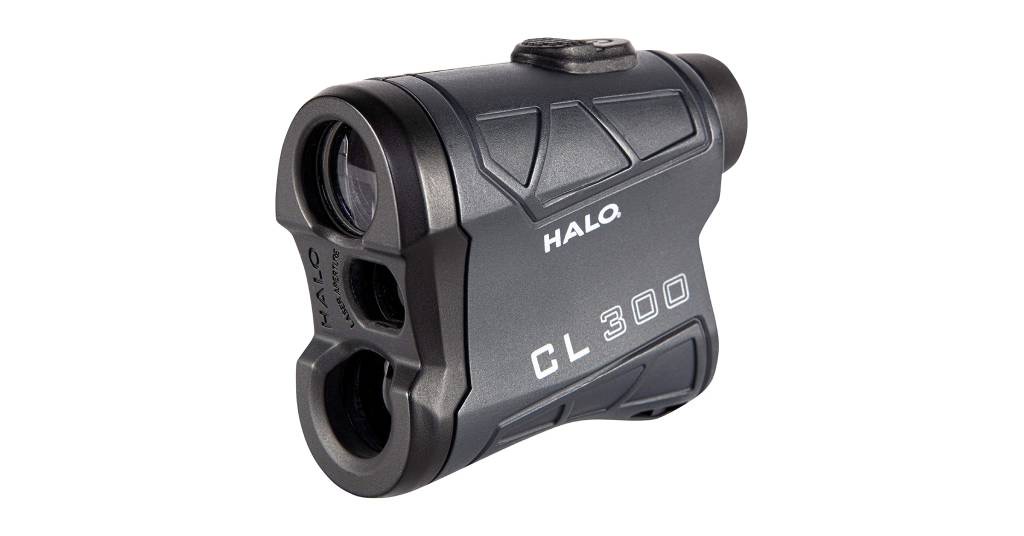
Halo CL300 Rangefinder
Specifications
ConClusion
So, not much to say, at a price point of $80 this rangefinder is a true bargain.
As a point of reference, the Halo line makes other rangefinders capable of reaching a 1600-yard range with varying price points according to their reach.
Not much more to ask for at this very affordable price.
2. Bushnell Laser Rangefinder Bone Collector Cam
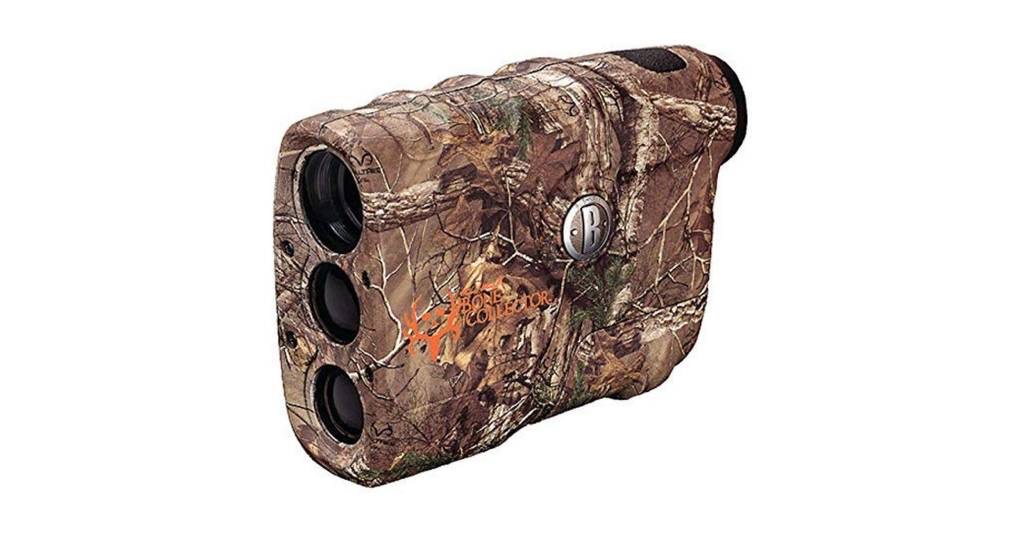
Bushnell Laser Rangefinder Bone Collector Cam
Specifications
ConClusion
A quick look at the Bushnell Laser Rangefinder Bone Collector will tell you this one was designed specifically for hunters.
You can carry it around in your pocket on a hunting trip.
At $139 this rangefinder offers a lot in return for your investment.
It operates on a single button function, which makes life a lot easier on the field.
The LCD display is rather comfortable.
Check this one out, you will not regret it.
3. Bushnell BoneCollector 850
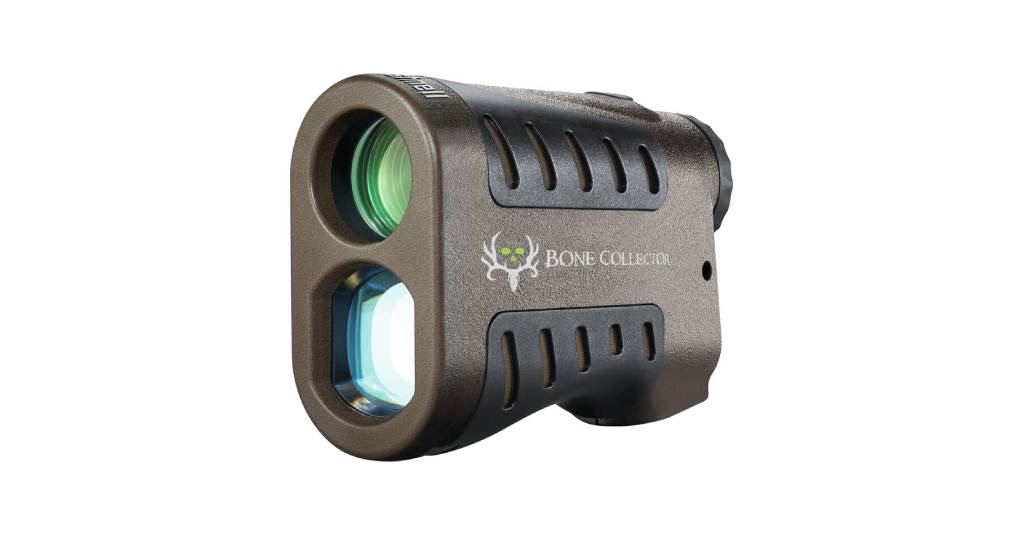
Bushnell BoneCollector 850
Specifications
ConClusion
Another fine product from the Bushnell collection is the BoneCollector 850.
At a price point of $142 dollars, this may not be the cheapest rangefinder you can find, but it is certainly one of the best you can buy for the money.
The only drawback I find is it has no angle compensation so the range for animals is limited to 400 yards.
Overall, this is a rather affordable model for outdoor and wildlife enthusiasts.
Worth looking into this one.
4. Sig Sauer Kilo 1000 Rangefinder
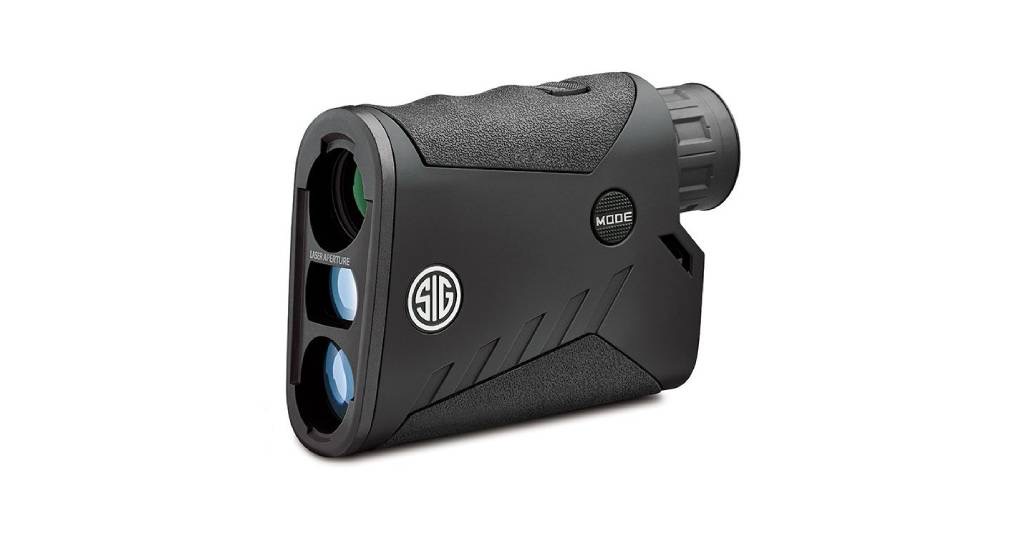
Sig Sauer Kilo 1000 Rangefinder
Specifications
ConClusion
For starters, the brand name Sig Sauer is synonymous with rangefinders.
At a price point of $143, the Kilo 1000 Rangefinder provides all kinds of features that provide line of sight or angle modified range as well as a high transmittance LCD display for low-light performance.
The maximum range of 1000 yards at this price point is probably [the] most enticing feature of this rangefinder.
I have owned one for years and can only say good things about it.
Glad I have one.
5. Bushnell 1700 Rangefinder
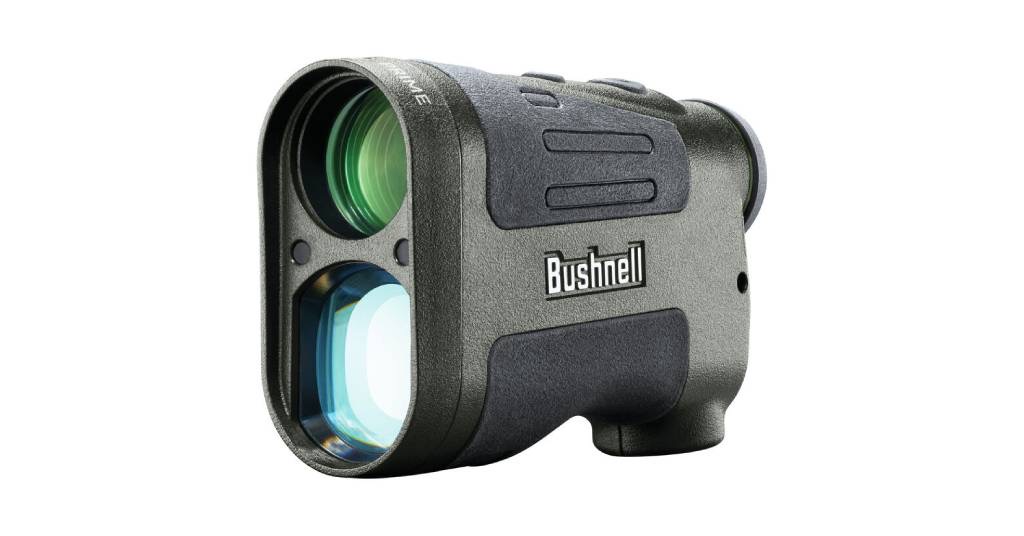
Bushnell 1700 Rangefinder
Specifications
ConClusion
Well, again, when it comes to rangefinders, the name Bushnell is symbolic of quality and the 1700 Rangefinder is no exception.
At a price point of just $170 dollars, you just cannot get more for your dollar, including their ARC [Angle Range Compensation].
It also boasts a water-resistant exterior and a brighter display than many other more expensive models.
Highly recommend this system.
Best Hunting Rangefinders - Top Picks [$200 and over]
1. Maven RF.1 Rangefinder
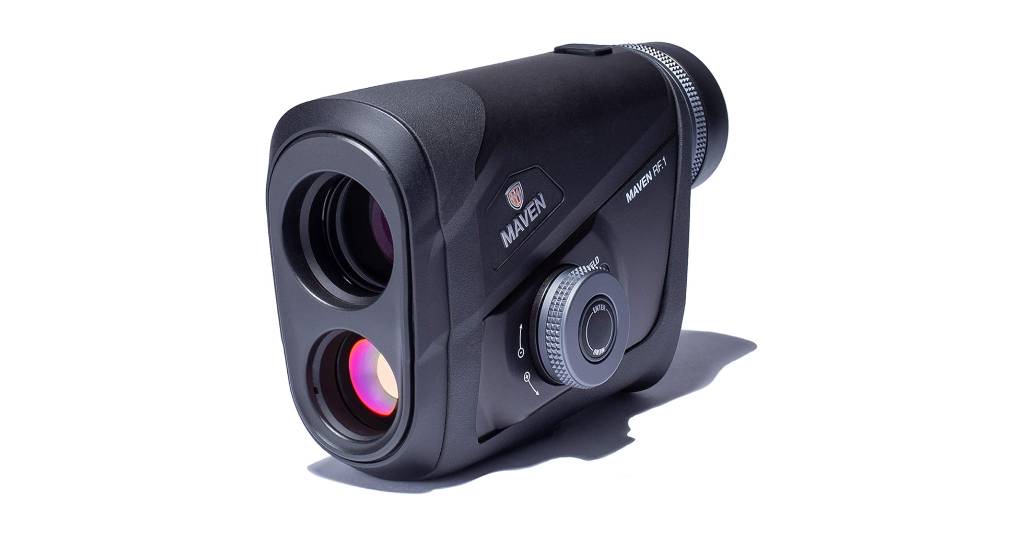
Maven RF.1 Rangefinder
Specifications
ConClusion
This is just one of the best rangefinders I could find in this price range.
While not as powerful as some of the 10x42 binoculars, the Maven RF.1 holds up well for most of a hunter’s fancies.
For the price of $450 this is one of [the] most powerful rangefinders in its class.
While deer can be easily ranged at over 2000 yards, larger targets or non-reflective objects could be ranged much farther out.
This model comes with a lifetime warranty and boasts fantastic reviews from folks that own one.
2. Sig Sauer Kilo 2200 BDX Laser Rangefinder
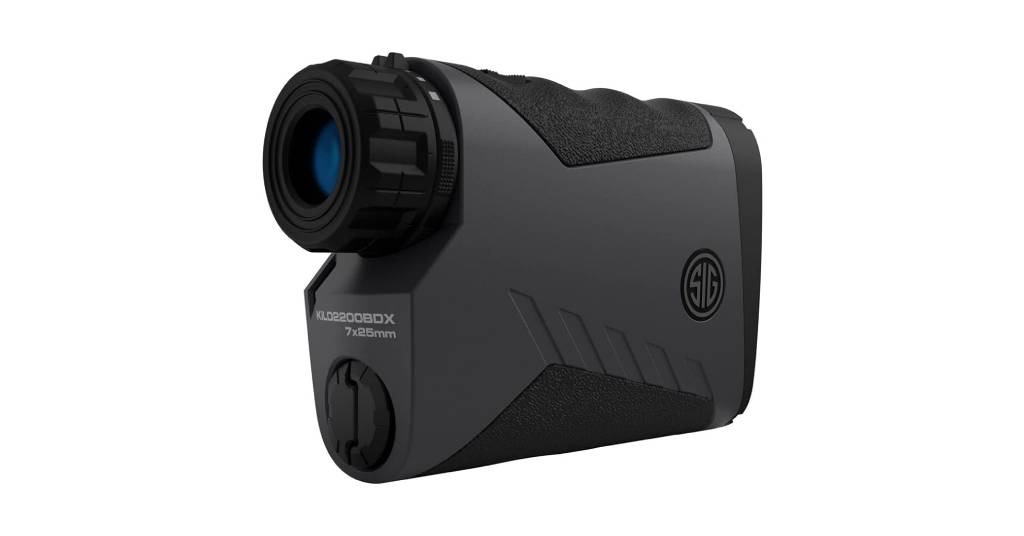
Sig Sauer Kilo 2200 BDX Laser Rangefinder
Specifications
ConClusion
Well, as I mentioned earlier, whenever you talk about rangefinders, the name Sig Sauer is synonymous with the best of the best.
This system, the Kilo 2200 BDX, comes with all the bells and whistles at a very affordable price point.
Some of its key features include its 3,400 yds., range capability.
This is your ideal long range hunting rangefinder while you could still take it to the Golf course and get the best of both worlds.
The Sig Sauer Kilo 2200 BDX has earned fantastic reviews from their proud owners.
3. Leica 2800.COM
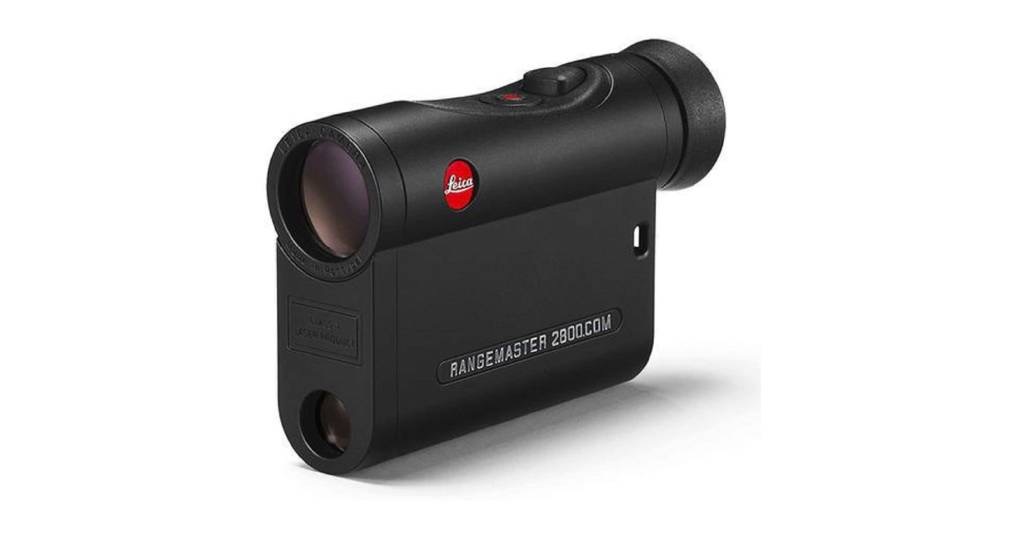
Leica 2800.COM
Specifications
ConClusion
So, the Leica 2800.COM was designed specifically for hunters, primarily for long distance precision rifle shooters.
It has an integrated Bluetooth connectivity to communicate with Kestrel Elite devices and similar weather stations.
This system features a red LED display which gives clear and uncluttered readings all the time.
4. Leica Rangemaster CRF 3500.COM
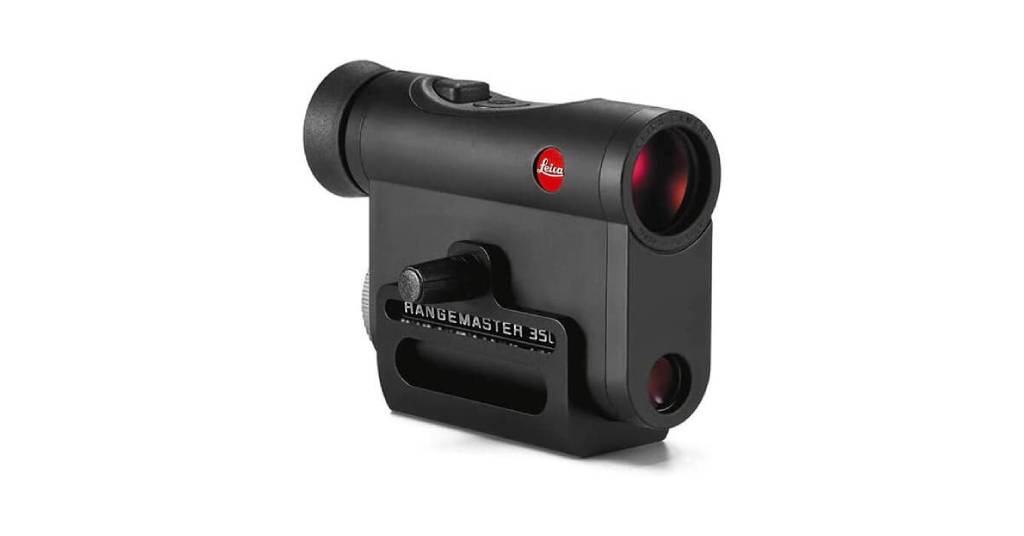
Leica Rangemaster CRF 3500.COM
Specifications
ConClusion
You have heard the old saying; you get what you pay for.
Never so true as with this Leica Rangemaster CRF 3500.COM.
This system comes with Leica’s hunting app where you can dial in ballistics, atmospheric conditions, clicks for your rifle scope and more.
While pricier than some of its counterparts, the Leica Rangemaster CRF 3500.COM., maintains super accurate readouts, which alone accounts for the higher price.
The company has chosen not to advertise distance to non-reflective objects; however, these rangefinders are known to scope deer at 1,500 yds., and larger objects at 3,000+ yds., within 0.3 seconds.
All told friends, if you can afford the extra dollars, this is as good a system as you can buy.
5. Zeiss Victory RF
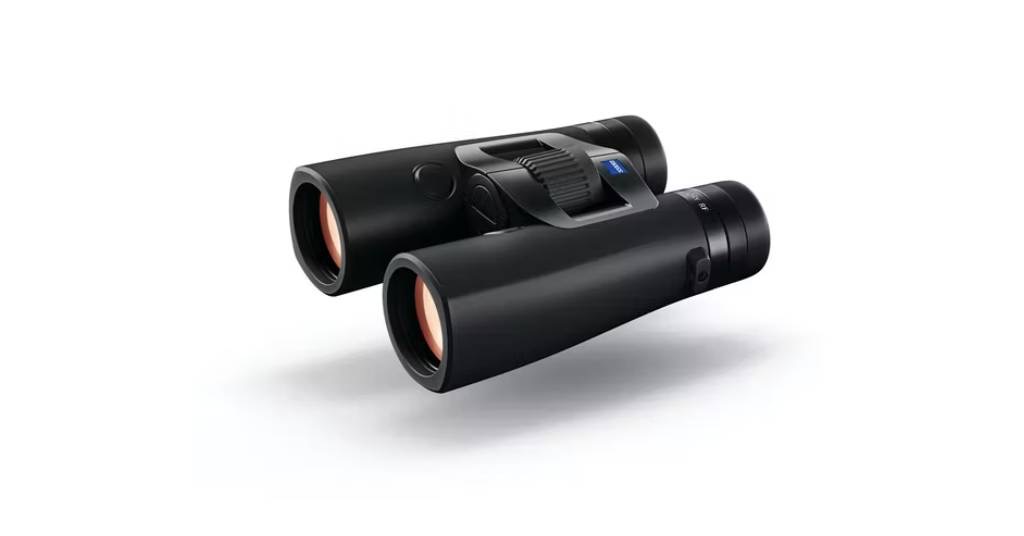
Zeiss Victory RF
Specifications
ConClusion
On a review such as this one, it would not be right on my part to end it without making mention of at least one range finding binoculars, and, as such, why not review one of [the] best out there.
If you happen to be one of the lucky hunters who can afford the pricier rangefinder systems, you should take a close look at this state-of-the-art binocular.
This is about the best that money can buy.
The Zeiss Victory RF is primarily a world class system – an obvious choice for long-range shooting.
Capable of detecting targets as far out as 2,500 yards, this rangefinder links via Bluetooth with its Zeiss’s Hunting App, which allows for the input of custom ballistics data or reference to a full library of standard loads.
I could, if I wanted to, go on to list many other features offered by this unit however I would have to spend most of the time I have left on that task alone.
In my books, compared with all range finding binoculars out there the Zeiss Victory RF is in a class of its own.
Again, if you can afford this one, just do not think about it twice, as this one is sure to make your hunting outings a memorable experience.
Best Budget Friendly Golf Rangefinders [$200 or less]
1. Bozily Golf Rangefinder
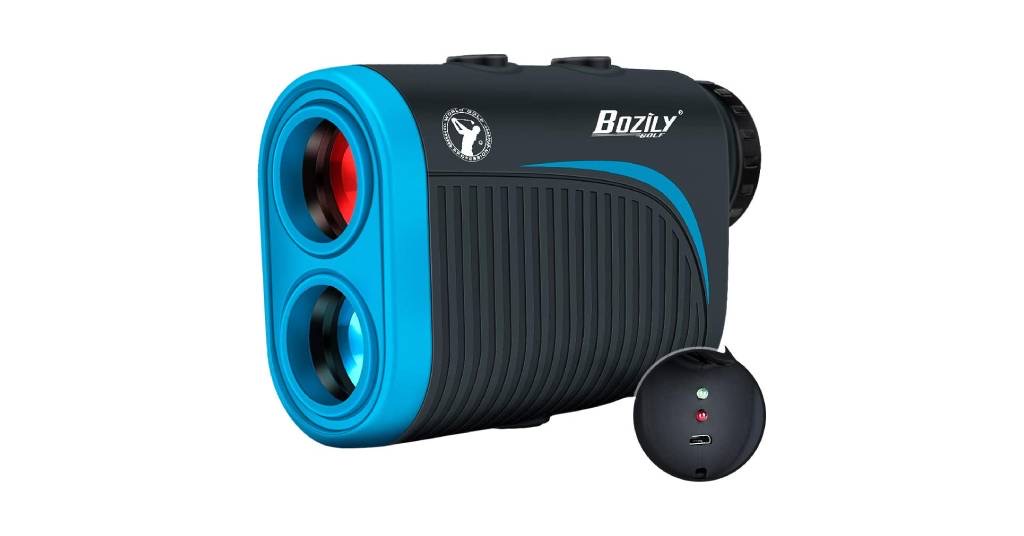
Bozily Golf Rangefinder
Specifications
ConClusion
As far as I am concerned, the Bozily Golf Rangefinder seems to be one of the best value golf rangefinders in the market, bar none.
At a price point of $80 dollars, the Bozily provides slope calculations and a whole host of other features, working reliably well on the golf course when locking onto the pin.
It has an ergonomic design and boasts +/- one yard accuracy.
While these units were designed specifically for golfers, they can work just as well in many other uses and applications.
2. PeakPulse 6Pro Golf Laser Rangefinder with Slope
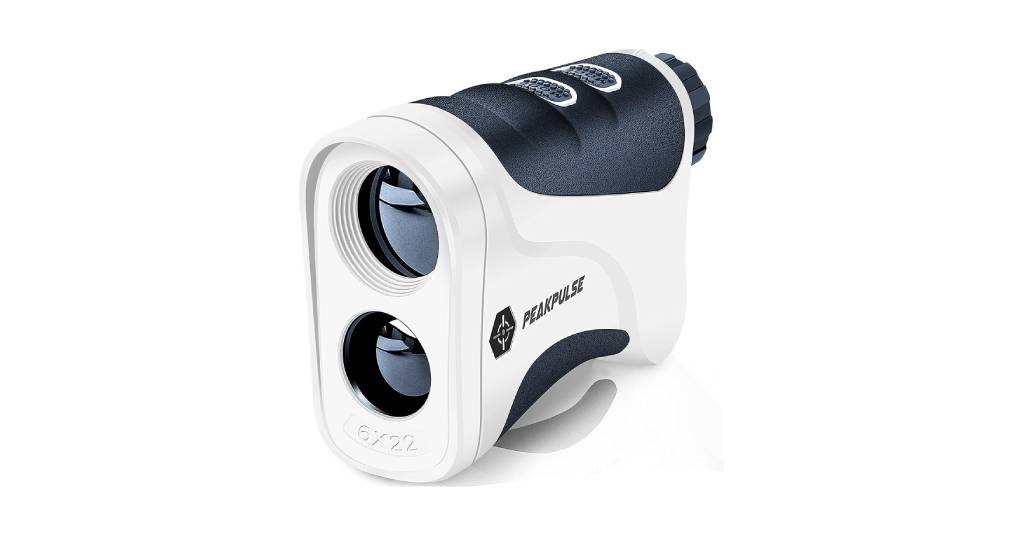
PeakPulse 6Pro Golf Laser Rangefinder
Specifications
ConClusion
The PeakPulse 6Pro Golf Laser Rangefinder is another budget friendly rangefinder which can legitimately claim accuracy to one yard up to 400 yards.
Its PinSeeker technology makes it easy to lock onto the flag.
The built-in slope technology gives you an adjusted distance based on the hole’s incline/decline and helps you select the correct club for the shot.
Try impressing your friends with this high-tech affordable rangefinder.
3. TecTecTec VPRO500 Golf Rangefinder
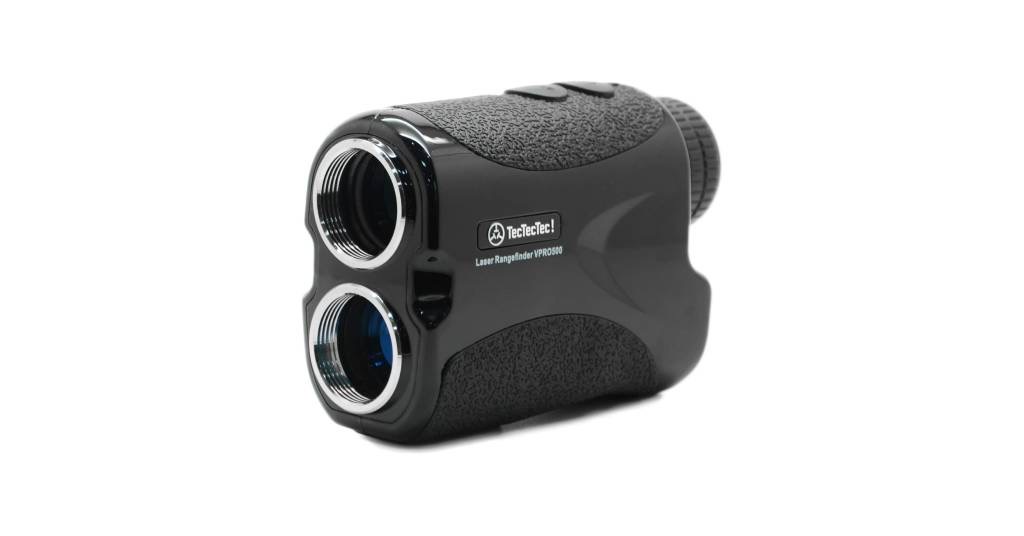
TecTecTec VPRO500
Specifications
ConClusion
Well, the TecTecTec VPRO500 Golf Rangefinder can rightfully justify to have quite a few 5-star reviews making it one of [the] market’s most liked rangefinders.
At a very affordable price of $150 dollars, this rangefinder is a true bargain relative to what you get in return.
The lens display is clear and simple to read offering a continuous measurement mode as well as a distance and battery meter.
4. Nikon Coolshot 20 GII Laser Rangefinder
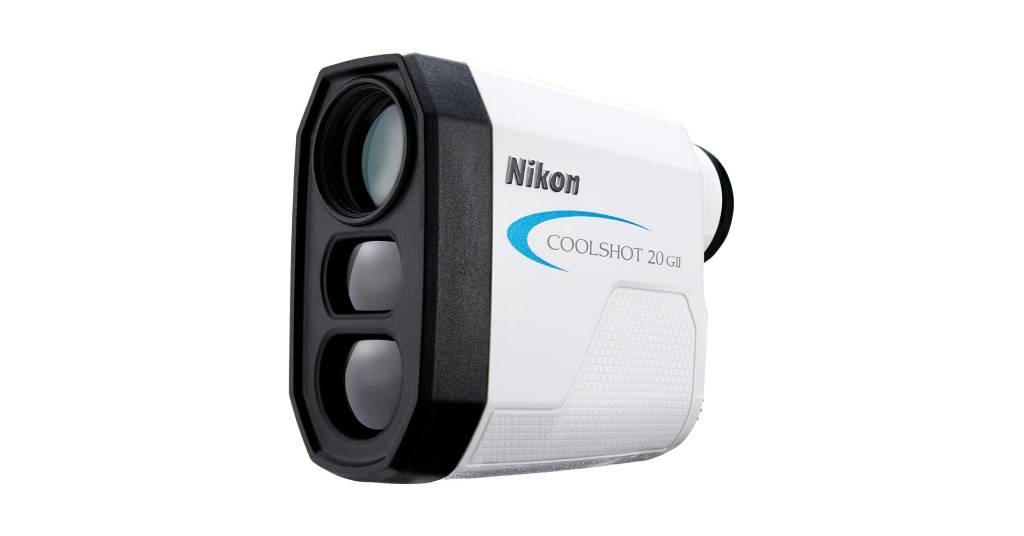
Nikon Coolshot 20 GII
Specifications
ConClusion
One of the reasons I chose this rangefinder was because, as you all well know, the name Nikon comes with an undisputable reputation for anything and everything that deals with optical equipment and the Coolshot 20 GII is no exception.
While this system does not have a slope mode, it does feature a First Target Priority algorithm to the closest overlapping subjects to pick out the flag and other hazards.
5. Callaway 300 Pro Rangefinder
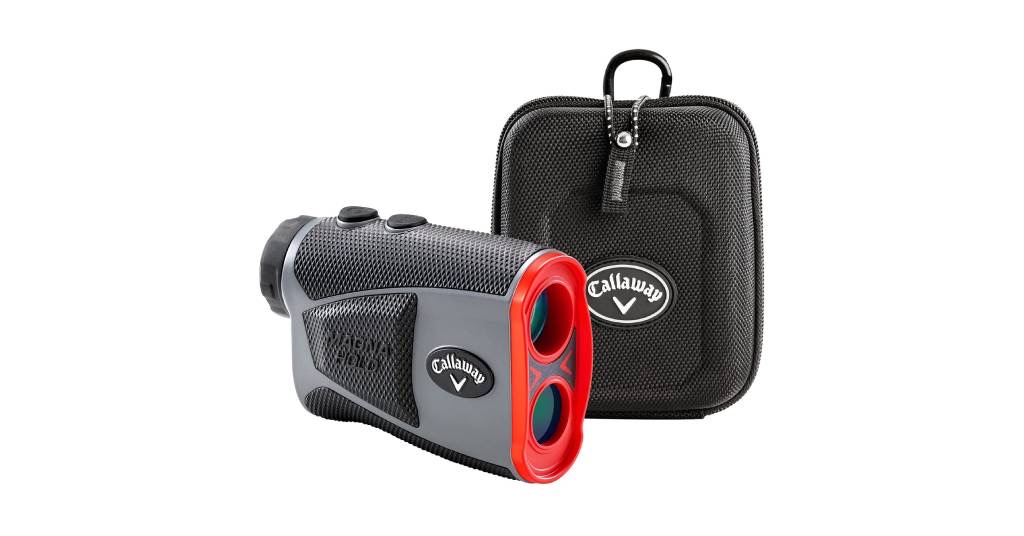
Callaway 300 Pro
Specifications
ConClusion
For all I know, the Callaway 300 Pro Rangefinder happens to be, I think, one of the best rangefinders in the price range of $200.
Designed specifically for Golf, the Callaway comes with a host of features that have earned it all kinds of 5-star reviews by quite a few golf enthusiasts.
This one comes with its Pin Acquisition Technology [P.A.T.] designed to lock in on small objects such as flags on the green.
It also boasts a slope angle compensation which is also a welcome addition to improve your game.
Best Golf Rangefinders – Top Picks [$200 and over]
1. Precision Pro NX9 Laser Rangefinder
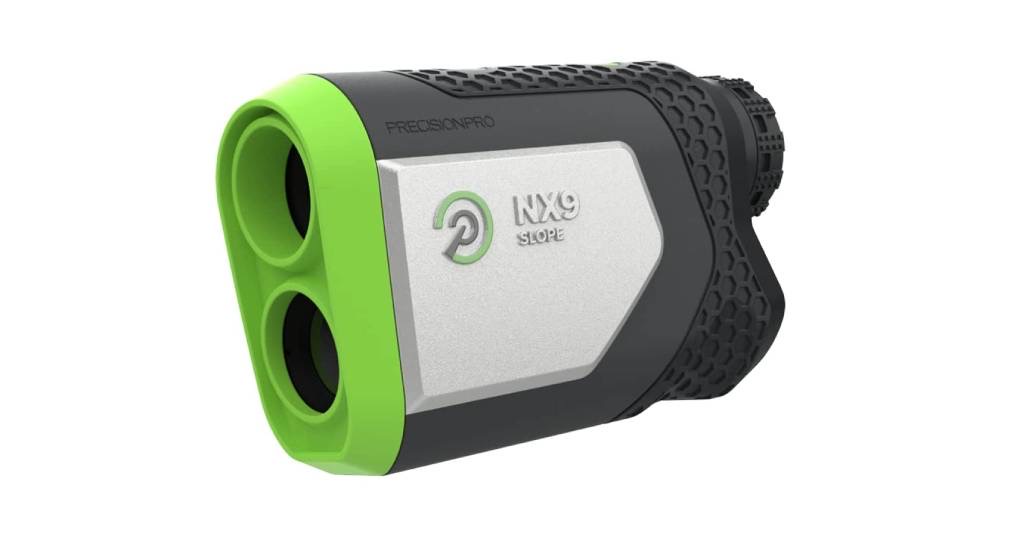
Precision Pro NX9
Specifications
ConClusion
The Precision Pro NX9 Laser Rangefinder happens to be one of the most improved rangefinders as of late.
This rangefinder has everything you would look for at a very affordable price point, which includes its Adaptive Slope Technology option, not included in lower priced Precision models.
The NX9 displays a 22 mm viewfinder that offers crystal clear optics with 6x magnification and 1-yard measurements.
This is a shockproof design with a built-in magnet which keeps it secured to your golf cart.
2. Bushnell Tour V5
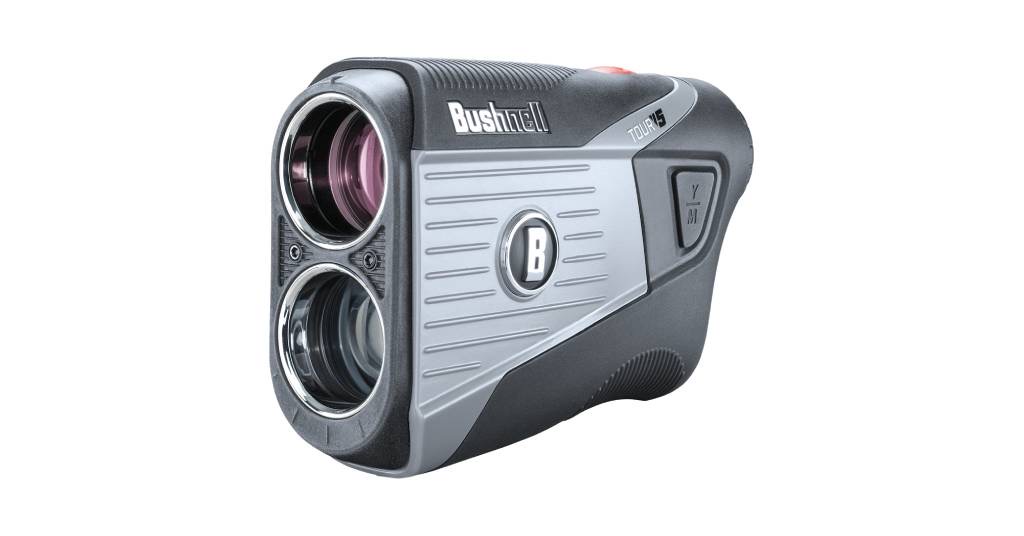
Bushnell Tour V5
Specifications
ConClusion
So, first, we all know by now, when it comes to rangefinders, the name Bushnell is always associated with excellent quality.
And I must say, the Tour V5 is very deserving of the Bushnell name.
The Tour V5 comes with a trail of great reviews given all the features including a pinseeker with a visual jolt that confirms when the laser locks in.
This rangefinder also features Bushnell’s patented Slope Technology that provides golfers with accurate compensated distances which can only serve to improve your game.
3. Nikon Coolshot ProII Stabilized Rangefinder
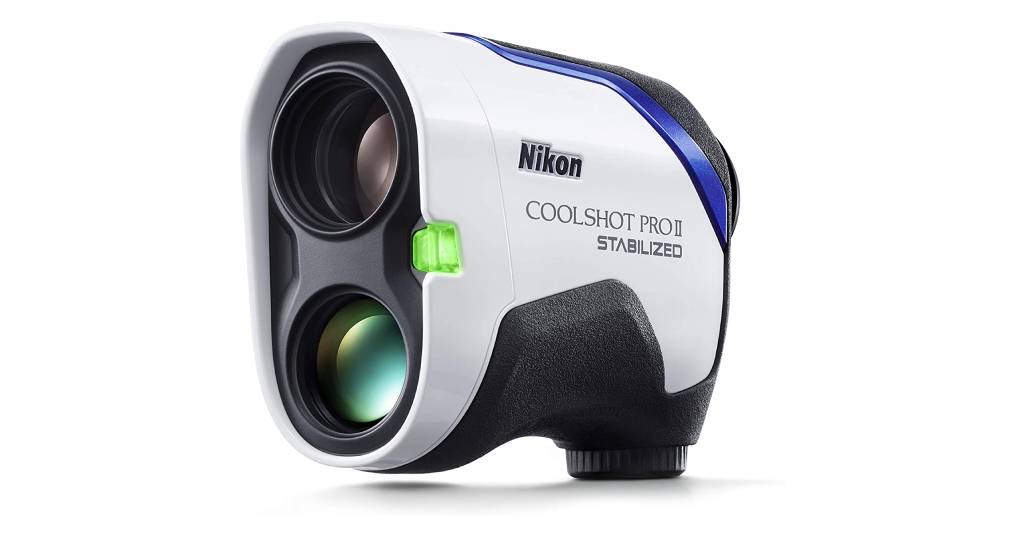
Nikon Coolshot ProII
Specifications
ConClusion
Once again, the name Nikon is equivalent to excellence in everything and anything in the optics and imaging products – that simple.
The Nikon Group has always been a trailblazer in products such as cameras, lenses, measuring instruments, scopes, etc.
As far as this Coolshot ProII Stabilized Rangefinder, Nikon nailed it once again.
The view on this rangefinder is simply stunning.
Key measurements are accurately displayed thanks to the HYPER READ technology and a premium OLED display.
Needless to say, it also comes with slope adjustment capabilities.
At a price point of $500 dollars, this rangefinder has all you want and then some.
4. Bushnell Pro XE Golf Rangefinder
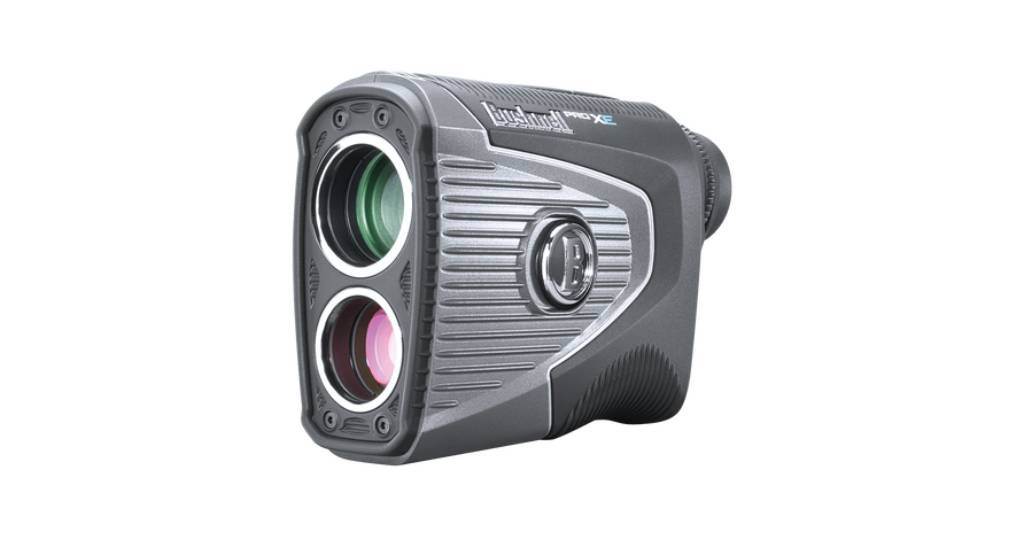
Bushnell Pro XE
Specifications
ConClusion
The fact that this rangefinder is made by Bushnell is just an added-value feature.
The Bushnell folks claim this is the best rangefinder they have ever made, and I will not argue that.
The Pro XE delivers on most all that a golfer would want from his rangefinder.
This is a turnkey system which features an unsurpassed slope technology for the most precise compensated distances you can think of.
The Slope Switch Technology allows you to switch in and out of the Slope mode to accommodate legal tournament rules.
I would definitely check this one out before your next golf outing.
5. Garmin Approach Z82
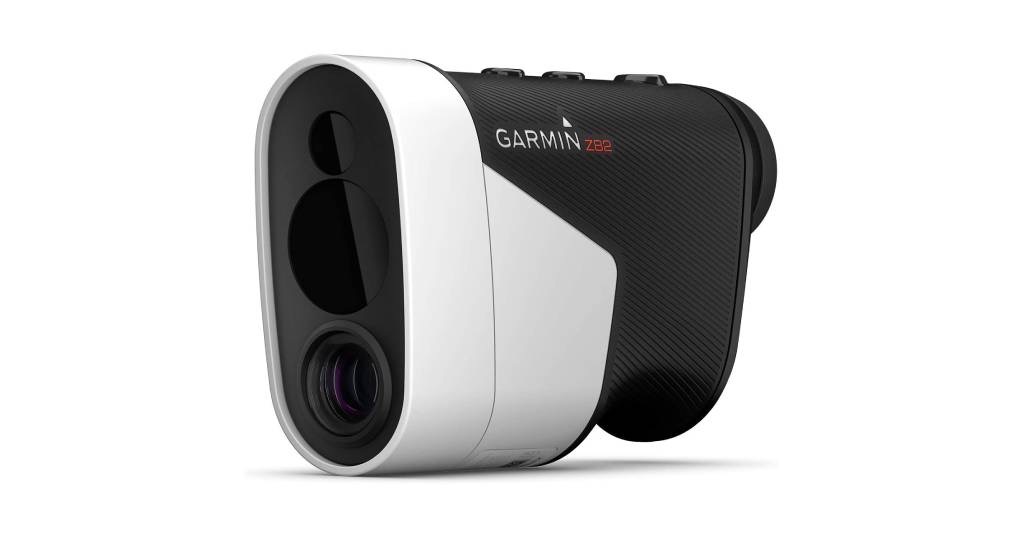
Garmin Approach Z82
Specifications
ConClusion
As you all can tell, the name Garmin is symbolic of this multinational company that specializes in GPS technology and decided to apply their specialization to rangefinders.
Their Garmin Approach, comes preloaded with over 41,000 golf courses around the world.
The features on the Approach® Z82 offers a ton of crucial information and details about yardage, obstacles, pin position, wind info, hazards, etc.
All of which will allow you to play like a seasoned pro.
Bottom Line
Well, first, as we come to the end of this review, I just hope you have enjoyed reading it as much as I have enjoyed writing it.
I would like to think that I lived up to my opening commitment in that I would try my best to help you navigate through a maze of variables and information as complex and intricate as I have ever seen in many other product lines.
Notably, the vast diversity of rangefinders in the marketplace today is really a tribute to these products since they have become a rather practical measuring tool with many uses and applications and with a much-varied appeal for different trades, such as surveying, golf, forestry, navigation, construction work, photography, archery, rifle hunting and shooting, airsoft, tactical, military, etc.
The wide array of applications found in rangefinders did not make my life simpler by any means, quite the contrary.
As our website is one mostly dedicated to tactical gear products, I was compelled to limit the review more to within our realm of expertise, to wit, “Rifle Hunting and Rifle Shooting” rangefinders.
That said, however, as you noticed, I did give you an overview on Golf rangefinders given the immense popularity they enjoy among the many golf enthusiasts in my loyal audience.
Main Points to Remember When Purchasing a Rangefinder
If you noticed, throughout this entire review, I have offered you some hints and pointers on what to look for when purchasing a rangefinder. Given the extend and length of this review, I thought it would be a fitting end to summarize some of these hints and pointers as follows:
1. Define your mission
As I mentioned before, make sure to define your application.
If you are a golfer, you certainly do not need a construction rangefinder, and if you are a hunter, why would you want a surveyor’s rangefinder.
With so many models out there to choose from, just make sure you keep your selection to the use and application of your choice.
2. Do not over-buy
I said it before, and I will say it again, do not over-buy.
Regardless of which brand, model, or application you choose, nowadays rangefinders are high-tech gadgets, many of which offer features which you do not really need.
For instance, why would you need to have a volume measurement in a golf course?
Try, if possible, to define those “must have'' features you want for your particular use or application.
Otherwise, more likely than not you will be overpaying for features you really do not need.
3. Set yourself a budget limit
I will politely recommend everyone in the market to purchase a rangefinder to set yourself a budget limit before you decide to go to the store or get online to buy your rangefinders.
Even if you are affluent and can afford the pricier models, still, I have seen many friends over-spend buying devices well beyond their needs.
In this competitive marketplace there are, I hasten to say, price points for everyone, if yet able to offer the very same features found in the higher price points.
4. Try and stay with brand names
While I am not ready to endorse any one brand, following are some of the most trusted names for both hunting and golf rangefinders.
As noted in some of my picks before, admittedly, nowadays there are many less-known manufacturers of rangefinders making excellent devices at very affordable prices.
My preference, sometimes, in choosing some of the brand names is typically related to their offering warranties for their products that other manufacturers do not.
In Closing...
So yes, we have finally come to the end of this review.
While I can say that it did live up to its challenge as I stated at the opening, I must admit I had fun doing it, as I learned a lot from doing it as well.
In my due diligence, I was able to learn plenty of insightful information about this wonderful line of products.
As much as I will not claim to be an expert in rangefinders, I will, nevertheless claim I am familiar enough with them as to, hopefully, have provided you with some very needed shortcuts and some insightful tips on how to choose the best rangefinder to suit your needs.
All that is left for me now is to wish you the best in your purchasing journey and, as always, hope I contributed to making it worthy of this review.
Good luck!
Frequently Asked Questions
As I have said on repeated occasions in some of my prior reviews, the FAQ Section, is, as far as I can tell, one of [the] most prolific segments of my reviews, if only because we are always learning from others.
Ironically, most of us tend to share the same concerns about a product.
The answers to most of these shared questions serves only to enrich ourselves in the form of an educational forum, whereby everyone, in the end, benefits.
Following are some of the most frequently asked questions I get from a wide audience – all us who share a common interest in rangefinders.

